A Story About a Taiwanese Tea Master and Gongfu Cha
By Lizane Louw
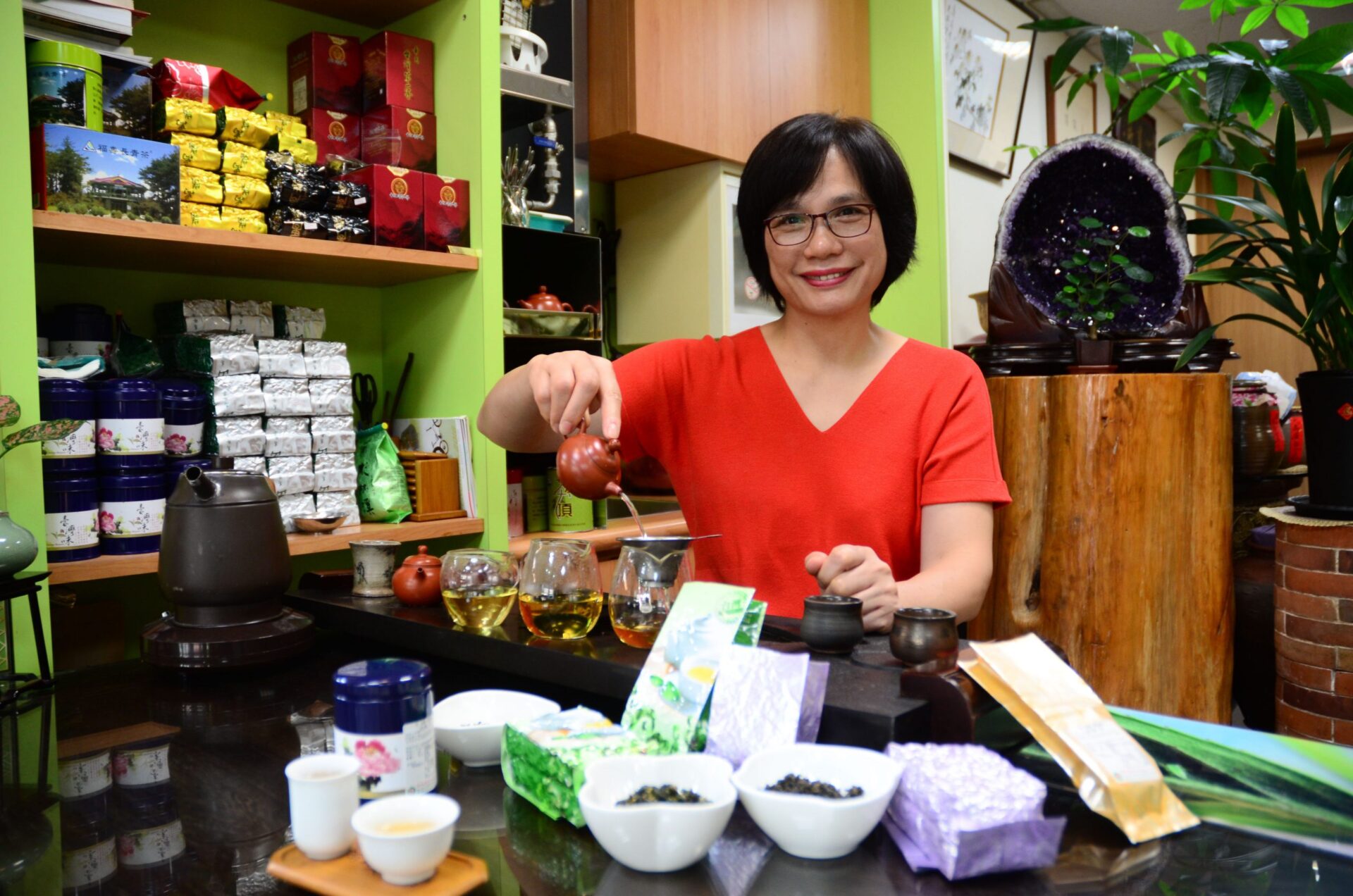
Taiwanese tea master, Chang Wen-Hshin, was born in Nantou county in a small rural village Mingjian. This area is the most beautiful mountainous area in Taiwan. It is an area that is humid and dense with rainforest trees. The luscious green trees and plants line the mountains. Nantou is also home to Sun Moon Lake. This tea master, Mrs Chang, grew up in a tea village and shares her Gongfu with those who visit Ten Shang Tea shop in Jilin Road, Taipei.
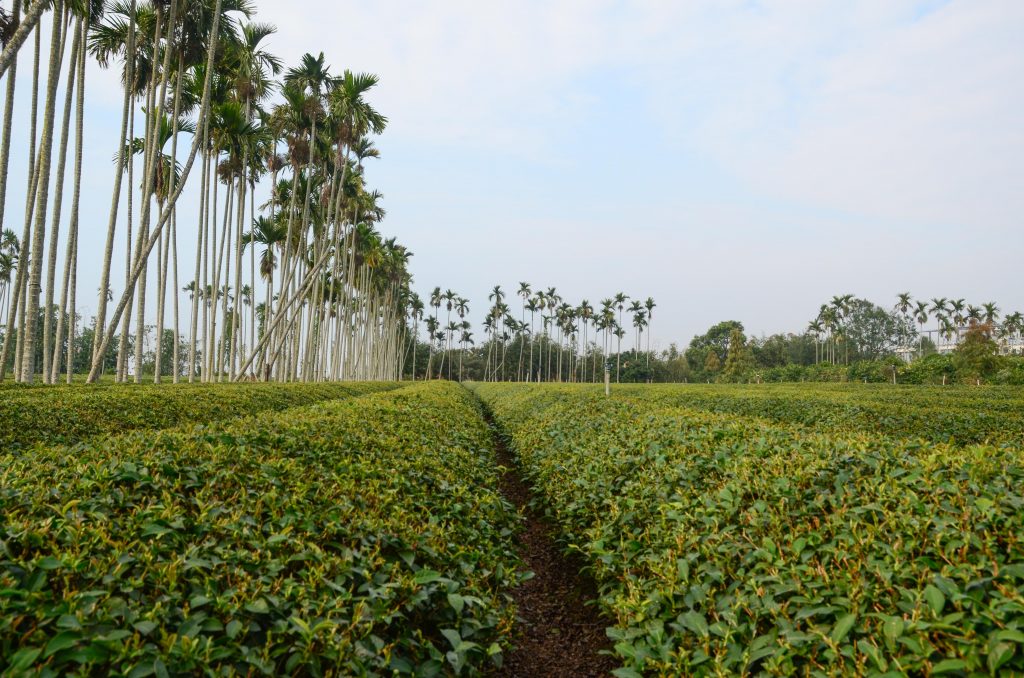
Taiwanese tea master, Mrs Chang was born in the mountains. Mingjian is a village where they now grow high mountain tea. This method of tea, High Mountain Oolong tea, was only developed 30 years 40 years ago. So when she was a child, the tea was not that high in the mountains. Minjiang is a place where they grow tea, make tea, bake tea, and sell tea. They sell their tea, not in shops, but in a local way; it is a local area. This Taiwanese tea master grew up in an area that is famous not only for tea but for agriculture, fresh air and tea.
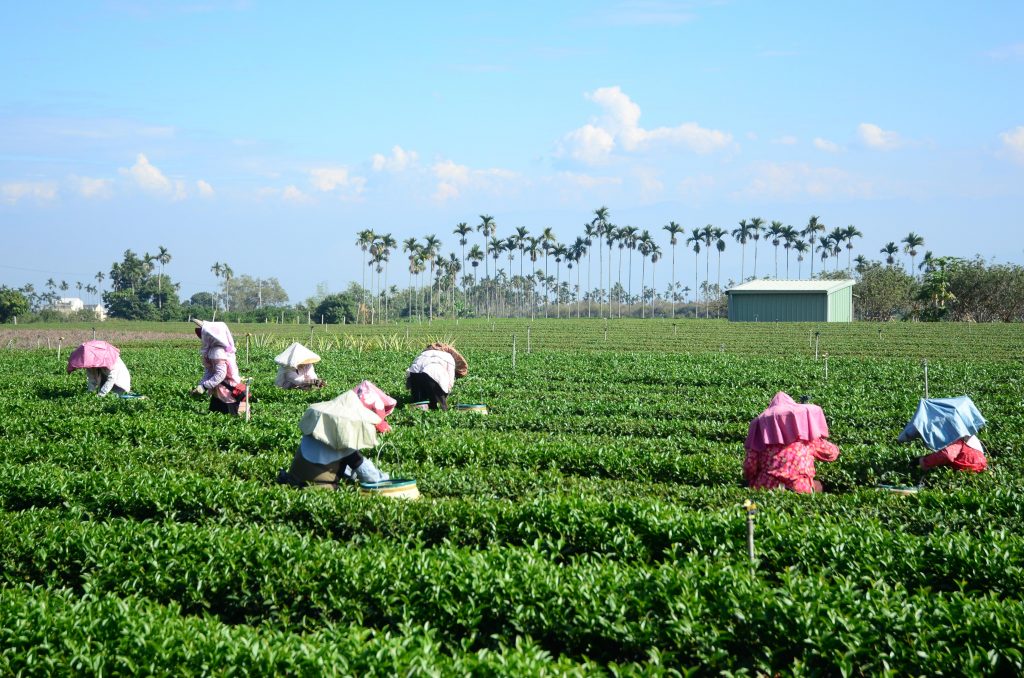
The first cup of tea for a Taiwanese tea master
“I had my first cup when I was in my mom’s belly,” Mrs Chang says. Her mother also loved tea, and that is how she got introduced to tea. Before she was even born. Mrs Chang is the 4th generation of family tea farmers that grow and sell tea.
Mrs Chang brews our first cup of tea while talking, and I take the aroma cup to my nose. I smell peaches, jasmine, an infusion of mixed fruit, and a bouquet. I looked up at her, and she smiles and says “You can smell things that you are familiar with. Everything is connected to things that you are familiar with. When she smells the tea, she says she smells her hometown, fresh fruits and flowers.”
For Mrs Chang, tea is about the tea ritual, the brewing steps and what effort she puts in the tea; it is a complete experience, how to do it, the entire ceremony.

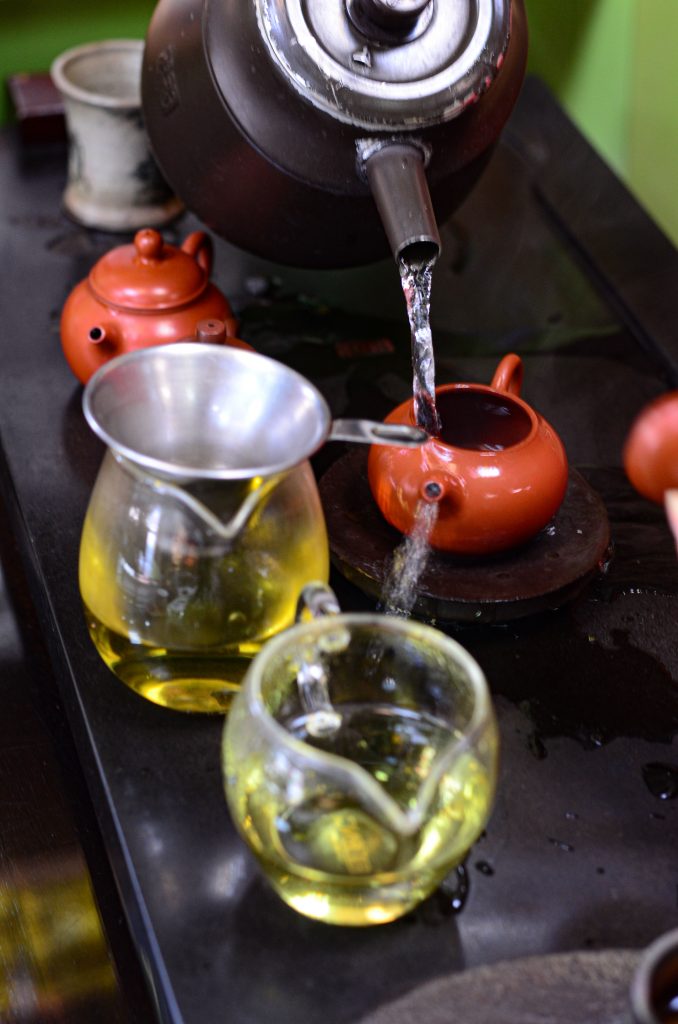

Knowledge in a cup
“First, people know about tea from what they smell and taste; as time goes, they will learn about different levels in the tea.”
“The body reacts, but so does the mind: the smelling and tasting release stress. The way you brew tea is how your mind and body calms down. But, there is something deeper in tea. These are old traditions; it is an ancient tradition.”
Life in a tea village in Taiwan
“When she was a village child, people knew tea was good for health. But, back in those days, it wasn’t easy to get an education,” she recounts. “Everyone knew and understood the benefits of drinking tea, but they did not know why. They did not know why it was good. But they knew it was good.”
“Today, there is a lot of research being done,” Megan, Mrs Chang’s daughter that is translating her mom’s words, continues. “And there is more knowledge available, so they are also learning now.” Mrs Chang smiles, and I notice her excellent posture as she sits behind the tea table, brewing tea. “She is learning how important tea is, and she is thrilled to share the knowledge passed on from generation to generation from her home village,” Megan says.
Mrs Chang recalls her upbringing in the mountains and says long before her mother’s generation, they had this traditional way of making tea. The whole family was growing tea. Her father and the older generations sold tea to the big cities. And as people became more educated, they shared their products and knowledge.
She grew up in a big family, one of eight children.
Organic tea
During the 1970s and1980s, Taiwan’s economy got better. During that time, the family was thinking about doing their own tea business, selling tea, and teaching people their unique tea concepts.
People are drawn to scented teas, tea with rose, tea with jasmine, tea with fruits, some people prefer natural teas. “Natural teas, you can taste and smell and feel,” Mrs Chang says. “They sell pure tea, it is from a certain altitude, and they don’t combine different teas or balanced tea like other countries, for example, black teas, they will mix black teas.”
Meagan explains the story of tea with teas that I know, “like Early grey; they balance the Indian and black tea. This is mass production; they want to balance the flavours continually. But our tea has a special character; maybe next season the tea will be different. This is because of the climate, weather, the temperature, the amount is limited.”
“That is our organic tea; that is natural. So you never get the same tea twice,” Mrs Chang continues.
The tea business
In the background, Mr Chang is helping customers buy tea and talking on his phone. He also measures tea from giant ceramic teapots, moving through the shop with a big smile, now and then adding a Chinese expression to our lively conversations around tiny glass teapots and a PinMing tea set.
Mrs Chang’s parents didn’t share their knowledge of tea in an academic way with books. “They transferred their knowledge through experience and practice, not the knowledge from the textbook, but by their experience and traditions. “They were too young to understand everything; most knowledge was gained with trial and error. So they learned from experience and experimented.”
All the teas in the shop come from plantations in the region where she grew up, a wide variety of exotic teas. The tea comes not only from the land they own but also from other family members. From the Alishan Mountain region and Shanming Shi. “We grow our tea in our lands but also co-operate with local farmers and sometimes with relatives,” Mrs Chang explains. “We go back to the tea fields to check the quality; Mr Shang usually does the quality control. He is very knowledgeable on the topic and is susceptible to the quality of tea.”
“It was in Ten Shang’s teashop where they met. My father was the salesman; my mother was the top saleslady. There were different branches called flash shops in these department stores. Every season these shops were re-arranged, and she, my mom, could choose where she wanted to work.”
A love story in a tea shop
Her daughter, translating for her, tells the story of how her parents met. The Taiwanese tea master sits behind the big wooden table and smiles at her daughter. Megan is an art teacher and shares the story of how her parents met. “My mother used to work in her uncle’s teashop; it had the same name, Ten Shang’s Tea. She was 16 when she came to Taipei to work in the teahouse or teashop. She started to run this teashop when she was 20. My father was from Kaohsiung, working with my uncle, and working as a salesman.”
A family tradition
Mrs Chang smiles knowingly as she listens to her daughter’s perfect English. “She is very proud of this history. Ten Shang’s was started by my uncle, my uncle’s wife, her family, and another uncle; they all had teashops. So we were five or six families working together.”
Mrs Chang pulled out an old tea book on the history of tea in a bookshelf next to the tea table and showed me a page. “There was an old advertisement placed by a family member in this decades-old tea book. The advertisement stands out from the others on the page look. The full advertisement illustrates a tea leaf, with the renowned red teapot logo at the top.”
This family has been making tea for decades, and Mr Chang says that their traditions were established long before High Mountain Oolong tea was grown. High Mountain Oolong tea is fermented, and it is a stronger tea.
Another round of tea is served. She watched me closely, and with her friendly smile, she pointed and encouraged me to smell the empty aroma cup again. She also points her nose into her tiny ceramic teacup and smiles knowingly as she looks up.

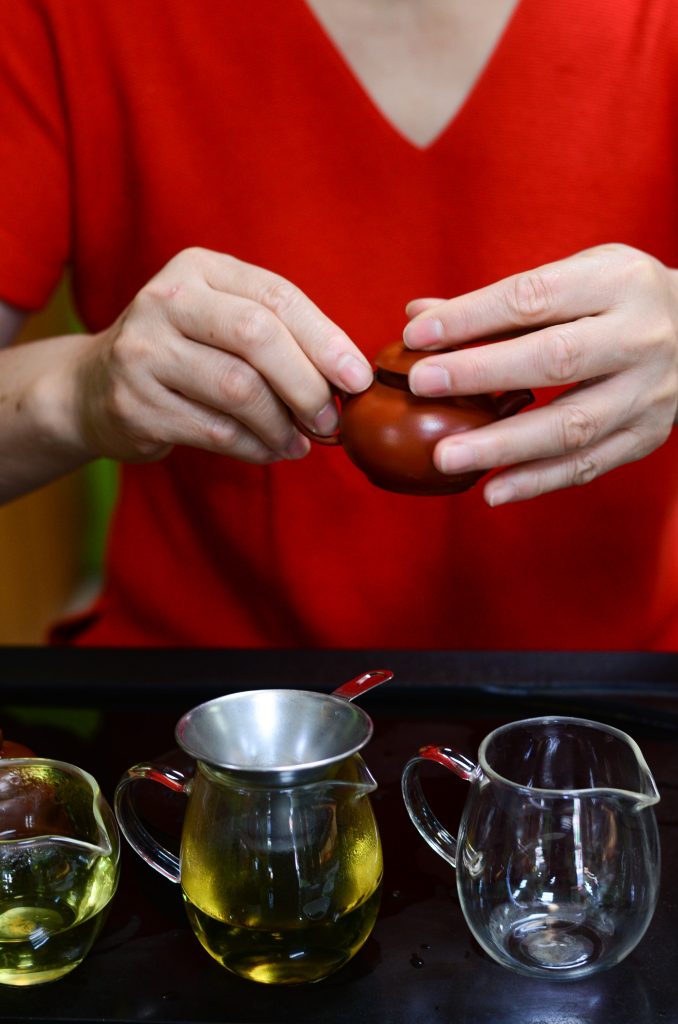

Ten Shang Tea Stories
I look down into my PinMing teacup, the light yellow tea in strong contrast to the clean white of the tiny ceramic teacup. I put my nose to the aroma cup again. More peach, more jasmine, more pears. The smell is like a summer perfume, with warm summer days, with fruity and floral notes.
The teas we are drinking are High Mountain Oolong tea, one of these tea masters’ favourites. I know this from the first visit. I have tasted High Mountain Oolong tea before, but this is the first time I have had an excellent English explanation and guidance on how to enjoy every note in the tea. The taste is flavourful, light and full.
Mother and daughter page through the book and speak in Chinese. I try to listen for words that I might know. They page through the old tea books on the table and continue sharing stories about family traditions whilst Megan translates. Megan talks about the advertisement again and her surprise when she discovered these old advertisements, the design of the red teapot and how talented her uncle was with design. She is an art teacher, but as our conversation continues around the table with these tiny little teapots, I realized that she is also a tea master in her own right. Like her mom, she also had her first tea taste when she was in her mom’s belly.
“Tea leaves, what a good idea for a design,” Megan says.
Mrs Chang says there were six Ten Shang Tea branches in Taipei. All family-owned businesses. Each shop had its traditions and way of harvesting, making and presenting tea. The family concept was always natural tea and traditional tea ceremonies.
A Taiwanese tea master’s favourite
“Tea takes us back to the original setting of our bodies. Your body tells you what you need and what you should have.”
I asked about Mrs Chang’s favourite tea. She talks about her love for High Mountain Oolong tea. She said that it is concrete all around us in life; the tea area, where it is grown, is very pure; these teas are grown very high in the mountains. “Every season, the altitude and all the different conditions change the teas, so I think this is the most interesting about tea.”
In the earlier times, according to Mrs Chang, Li Shan, Li means pear in Chinese, the fruit, “earlier these teas were grown with pears and peach. They used to grow a lot of peaches and pears. But on Li Shan Mountain, they grew pears; this has influenced the teas from Li Shan Mountain.”
You can smell the fruits in the tea, I say. And she laughs as they reference my name, Lizane, which sounds like Li Shan. Li Shan area was where they first developed teas.
A sensory experience
“When you are smelling the tea, you are in the forest. You smell flowers, and you smell fruit. It is like summer in your cup. This is a natural way,” she continued
I bring the aroma cup to my nose, and the fruity fragrance of peach and pear takes me to the middle of a forest in Nanou. With my eyes closed, I realised that this master of tea was right. The tea this time is more robust; it is bitter when you take sips; it becomes so sweet when you swallow. It is a complete sensory experience, smells, and tastes that transport you to Taiwan’s most beautiful mountainous areas, where they grow the finest teas.
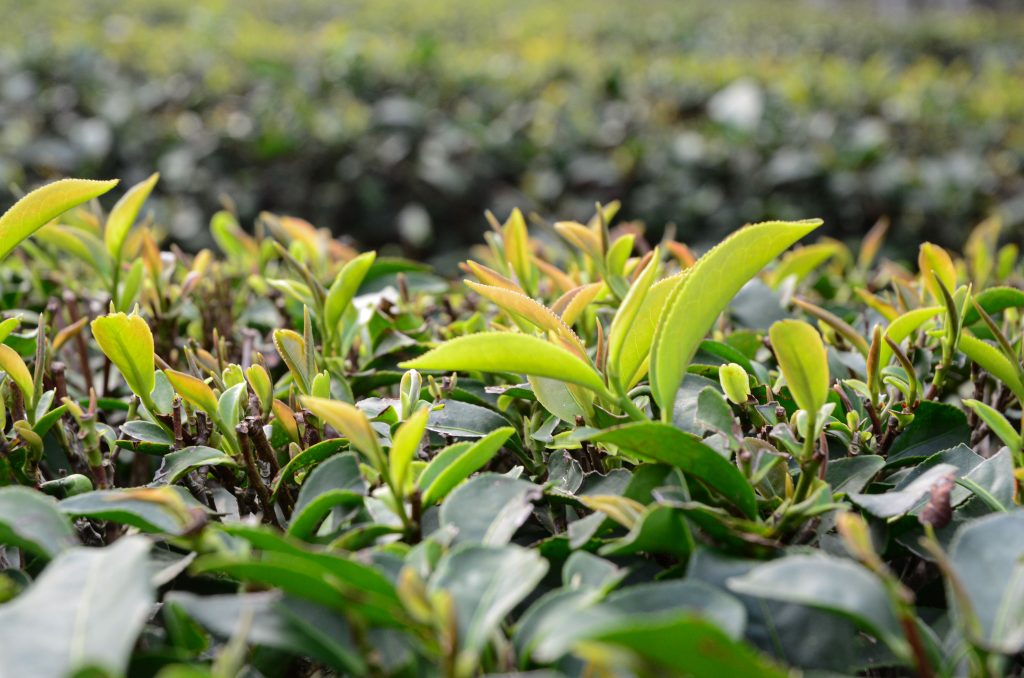
The making of good quality tea
Megan says she was always curious and asked her parents when they visited the tea masters, “what are you doing, what are you making? How long will you wait for the tea.” “And always I got the same answer: ‘it depends’, she laughs. I asked to depend on what?”
“Then I realized it depends on the climate, the humidity, the weather and the temperatures of this year, and today’s sunlight and the temperature of the sunlight. Is it extreme, is it very mild? Is it soft, is it hard? It changes all the time. So this influences the products that you make.”
“Good quality tea depends on many things,” said Mrs Chang.
“Mr Chang put a lot of effort into learning about tea, he studied electronic engineering, but after he received a cup of tea from a family member, he realized the value of tea. He had a sensitive stomach and was told that he couldn’t drink jasmine tea or green tea; it was too strong for his stomach, so he had to drink stronger fermented tea. And he realized that this was a good thing, and instead of taking medicine, he drank tea,” Mrs Chang recalls as she tells the story of their tea history and how her husband fell in love with tea.
Mrs Chang smiled broadly, and we laugh, her face warm and friendly. There are hardly any wrinkles on her face or storylines that I would associate with a woman her age. Megan points at her mom, sitting attentively and listening to her daughter translating the stories. “The real reason my dad fell in love with tea is my mom.” We all laugh. “That was just an excuse.” Mr Chang realised early in his life that there were more tea benefits. He wanted to create a business but also take care of his health.
“I am happy my dad is not selling wine or something like that. I can’t have wine every day,” Megan says as they laugh. “When I get home, I can have a cup of tea with my family, with my mom and dad.”
A family of Taiwanese tea masters
When I walked into Ten Shang’s teashop for the first time about two weeks ago, I was met with the most radiant smile. A warm, friendly face greeted me and pointed me to a table. The warmth of that first meeting is accentuated with this tea experience today. Mrs Chang’s eyes were sparkling white, and I noticed a perfect posture, and her movements were graceful. She was so welcoming that first day. Today she feels like family.
For my western mind, this experience is another universe, I thought. I know so little.
“Even though I was drinking tea in my mother’s belly 30 years ago and still drink tea, I still feel I know so little about tea.” I am amazed at Megan’s knowledge about tea, and I know that I am sitting at a table with traditional tea masters. Mrs Chang has imparted her knowledge to her daughter, who translates all the family stories about tea into perfect English.
Who Megan is today is a product of how she was brought up, having a mom and dad that loves nature and tea so much that they build their lives on the tastes and smells in tiny teapots and teacups.
I share stories of Red Bush tea (Rooibos tea) and tea in South Africa.
Mrs Chang did not study tea. She had primary education in School. She said that you could not research tea back in the old days, but her other daughter, Megan’s sister, Pi Yuan Shieh, studied to be a tea master. “After her bachelor’s degree, she decided to go the academic route. Yuan Shieh was raised in the tea tradition, but she wanted to know more” she went from traditional education to books. As a student, she went to a tea organisation, a government organization for tea planting and growing. She studied, and she got her license as a tea master. She is a tea-tasting master. And according to Mrs Chang, Taiwan wants to spread the knowledge and magic of tea internationally.
Tea for days
Mrs Chang brewed a new tea in her tiny orange ceramic teapot. I stopped counting how many cups I had. Instead, I put the aroma cup to my nose. The tea is darker, a deeper gold and more fruity, more earthy.
The Taiwanese drink so many different kinds of tea. I asked Mrs Chang what she thought about bubble tea. Megan laughs as she translates the questions, “she thinks it is an interesting creation, but it is not the roots of tea. It is not tea. It can be a snack or dessert. She said that putting milk in the tea is not good for your health.” We all laugh and take sips of tea.
I was curious; this is my second visit to the teashop. I was wondering how many cups of tea Mrs Chang drinks a day. Megan answers for her mom: “Countless.”
They laugh as Mrs Chang declares that just after she opens her eyes in the mornings, she will have her first cup of tea, and then she will have tea till ten in the evening. So her days are long, tea days.
I looked over at Mrs Chang and noticed her youthful complexion. I can’t think how old she is. Megan’s said her mom was 56. For 56, she sure looks good. I take a sip of my tea and thought her youthfulness and radiant complexion must be because of the countless cups of tea she drinks every day.
“She says that she is drinking over a hundred cups a day. She drinks tea for almost 12 hours every day. Welcoming people into the teashop and sharing her knowledge,” Megan translates with a smile.
I looked at Mrs Chang and declared that I know the secret of her youthful looks; it is tea. She laughs, and the thin brown frame of her glasses on her nose moves up. Her teeth are white and shines when she smiles.
Tea and health
Mrs Chang says that tea is perfect for your health. In tea there is a little tea oil, that is very good for your body, it protects. Sometimes sensitive skin too can be healed with tea. “If your feet are smelling bad, you can put tea dust, hot water and salt on your feet, which will help eliminate the bad smell. It will heal your feet.”
“If you have allergies, it can help too, by rubbing the tea on your skin.”
In the old day, when they got hurt, she recalls, they did not have alcohol, ointments and stuff, so they used tea when it cooled and rubbed it on their skins. “It wasn’t easy to get doctors back in those days. So to clean the wounds, we used tea; even if we didn’t have any medicine, tea healed the wounds.”
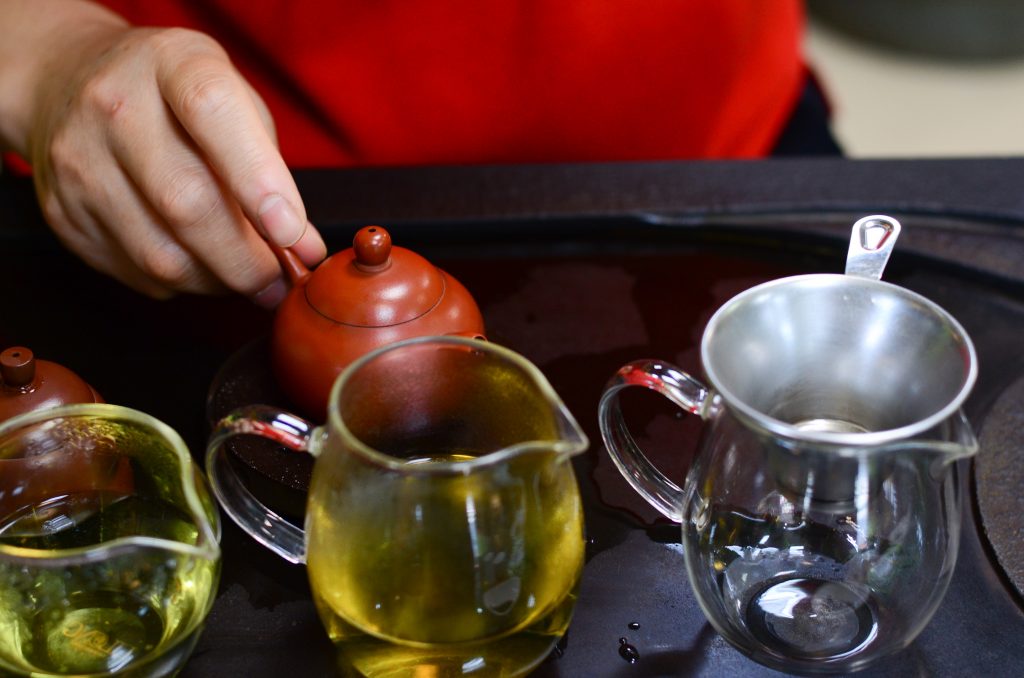
“Tea can be used as medicine, ointments and medication.”
“The elders did not teach them much, but, when she thinks back now, they taught them all about life.”
This is actual tea knowledge, practical application, storytelling, memory, and cultural experience.
“The utilization of tea is countless; the tannins in the tea help a lot to renew the cells in the body, it is not medicine, but it helps with healing.”
The Gongfu Cha ritual with a traditional Taiwanese tea master
The ritual she performs as we sit and share our stories is the Gongfu tea ceremony. And she explains the brewing ritual in detail and the utensils placed meticulously in front of her. She starts by explaining how to brew tea in the tiny teapot; she speaks about balancing the tea in the balance and sharing cup, the importance of the aroma cup, and then your cup for drinking. The whole set is called PingMing. It is such fine ceramics and straightforward and earthy designs; it’s minimalist. I thought the tea utensils did not take away from the entire experience. On the contrary, it complements it; the focus is on the tea, not the utensils.
“Ming is another word for tea; you use this word if you elegantly speak of tea,” she explains.
Gongfu is like Chinese style Kung Fu, the martial arts. This is an old tradition. She points at the tea table and explains that this is the tea table, and in earlier times, they used a tea ship. She points to a brown ceramic bowl. And there was no smell or aroma cup. The ritualistic ceremony she had been doing the whole morning, whilst sharing stories and sipping tea out of tiny teacups, is an adaptation of Taiwanese style GongFu. The aroma cup is a traditional Taiwanese way of drinking tea.
“They call this ceremony the Gongfu tea way. It is the ritual that creates the right atmosphere for drinking tea.” There are traditional ways connected to conventional stories. “Brewing tea means experience; this is the Gongfu.” Mrs Chang explains.
Show me your Gongfu
“Sometimes in the old days, a customer would walk in, sit down and say to the tea master, “show me your Gongfu” show me your way of brewing tea”, the tea master continues. Every tea master has a different way of making tea, and every tea ritual is other, which is the art of the Gongfu ritual.” This struck me. This tea master is showing me her Gongfu.
The practice of making tea, the secret steps, the balanced way is your Gongfu as a tea master.
You have to be familiar with a tea master to walk into the shop and say, “show me your Gongfu”, Mrs Chang says and laughs aloud.
The Gongfu ceremony is storytelling Mrs Chang says. Stories about generals and war and how the general serves tea to his soldiers. “It is based on storytelling whilst drinking tea; there is also a special way of serving it whilst telling stories.”
This is Gongfu style. True Gongfu. Proper tea, proper ceramics, exciting stories.

What tea to drink?
The Gongfu tradition, according to a Taiwanese tea master
“People ask why we use tiny pots and cups; they are for tasting, not drinking. This is tasting. Like wine tasting, you are not drinking wine; you taste,” Megan translates.
“Your body is more sensitive to taste if you do it like this. This is the traditional way.”
“Tasting tea is like telling stories; while you are researching tea and writing about tea, in the end, you will find that you are writing your own story; that is what attracts people to drinking tea,” her mom says.
Mrs Chang suggests that I start from the middle, drink middle-quality, lower quality, and higher quality tea, and not just focus on one type of tea. “Remember to trust your tongue and your body; your body will tell you what you need and what is good for you. Your body has a preference. This will come from your body. Your body will be sensitive.”
The first tea we had was the 35-per cent fermented tea. That is the High Mountain Oolong tea. Mrs Chang’s favourite. I decided to buy some of this tea. It comes with a hefty price tag.
My introduction to High Mountain Oolong tea
I am a special guest, the master of teas says, and because this is not my first time drinking tea with her, she decided to introduce me to this tea. “This kind of tea, we don’t introduce this kind of tea to people who visit for the first time. This is a new style. We will introduce you to more advanced teas if you want to know more about tea and learn more about tea.”
“When you are young, you drink light fermentation; then, you can drink higher fermentation when you are older.”
“And then you can know the differences in tea, practice to have your style, find your best taste, find your way of presentation and own way of brewing.”
“Tea is my life; for me, it is just like breathing,” she says as I take my last sip.
“Tea connects her to her life, when she was born, when she was a child, when she got married and when she had her children. So she is very proud that this shop, such a small little tea shop, is so popular and that so many people around the world would come to visit such a tiny little teashop,” Megan summarised her mom’s words as the tea master, Mrs Chang, looks at both of us and smiled.
“Every time we share knowledge and our passion for tea, people have unique experiences. In Chinese, we say, use the tea to make friends and meet again.”
“People feel home here; whenever they don’t know where to go, they can visit our teashop,” Mrs Chang says.
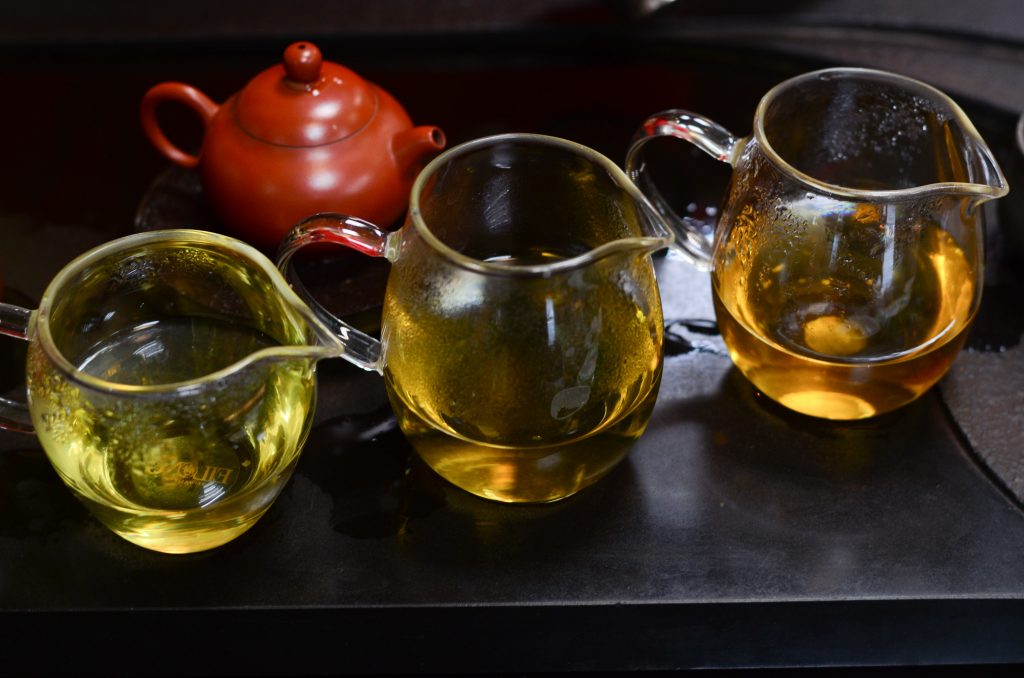
On an A3 calligraphy artwork against the back wall, behind the small orange and black ceramic teapot exhibit, is some Chinese writing next to a big orange stone Buddha. I asked Mrs Chang about this, and she says it is the Tao of Tea. At that moment, I realised that I am in the presence of a real master. A master that is not only teaching me about tea and a whole universe in my teacup, but she is also teaching me a way of living, a way of breathing and existing—my new tool of discovery, tea.
The Tao of Tea, Taiwanese Tea Master
How you drink tea shows how you treat people. Serving tea also shows how you treat people. The tea philosophy is based on how you treat people and, in the end, yourself. Always leave space for yourself. A full cup of tea is not good. Serve 70 per cent and leave a 30 per cent space. “
“He who knows where to stop…. It is a measurement of life. While you are working, your relationships this is balanced. The word and philosophy explained in Chinese means the unit of measurement.”
Today, again, at the bottom of this tiny ceramic teacup, I learned so many things. I was sitting in the presence of a true tea master. I learned a cup is life, a cup is full of stories, and a cup is a universe of knowledge. This philosophy of tea is connected to this ancient Chinese Tao philosophy.
This is the teaching, the Tao of Tea.

Want to know more?
You can read more about my tea adventures and how I got into writing about tea, The Tea Diaries.
For those curious about this ancient tea ritual, here is a video by Slice. A Traditional Gōng Fu Chá 功夫茶 ceremony Led by Master Wing Chi Ip | SLICE
Photographs and text by
Lizane Louw
As a travel & culture journalist, Lizane researches, writes and shares original travel and culture-related stories. Lizane produces high-quality content for various platforms, including print, online, social media, and video platforms. Lizane enjoys writing feature articles, sharing experiential stories, and creating photo essays of all the offbeat, remote and interesting destinations she visits.
